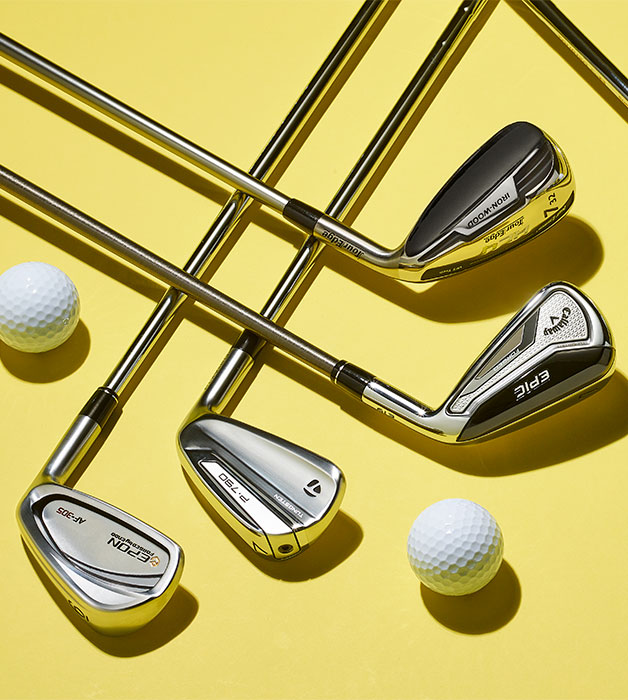Not all 7-irons are alike. We’re not talking about shape or even materials. We’re talking about loft – for all of golf eternity the most basic building block to determine ball flight. Some clubmakers keep lowering the “standard loft” of their 7-irons in a race for more distance. (The 7-iron is what most golfers test first when shopping for new irons.) That means some 7-irons today might be 6 degrees stronger than other 7-irons. If you haven’t tried new irons in a while, some of these 7-irons might have the loft of your current 5-iron.
But to be fair, other design characteristics have changed, too. For example, using materials to lower the centre of gravity and thin faces to increase ball speed and height means stronger-lofted 7-irons can produce trajectories like traditional 7-irons – only with more distance. But it’s still player-dependent. The longest club you might be able to hit consistently could have a “5” or “6” on the sole when it used to have a “3” or a “4”.
Stronger-lofted irons shouldn’t necessarily be a problem for some average golfers. The reason? Unlike tour players who deloft their irons at impact, most average golfers add loft by trying to help shots in the air. That could turn a strong-lofted 7-iron into a more traditional loft. Nick Sherburne, founder of Club Champion, a US-based fitting chain, says if you’re excited about how far you’re hitting that new 7-iron at a demo day, know the facts before handing over your credit card – like having sufficient distance gaps through the rest of your bag.
“A quality clubfitter will dial in your loft for the appropriate launch and spin that you need, but any club can be bent to optimise launch and spin,” he says, noting that nearly every iron set he fits to a customer includes some tweaking of lofts in the irons or wedges, or both. “With the way design controls centre of gravity, so much is possible with irons,” Sherburne says. His advice: choose irons based on distance first and then what you want your ball flight to be. And don’t assume the wedges and hybrids you have now can seamlessly match up with a new set of irons with new lofts.
 1. Epon
1. Epon
af-305
The cavity is deep, but the sole doesn’t get too wide on this players-iron shape thanks to a tungsten inlay that helps boost forgiveness and launch.
2. TaylorMade
p•790 (2019)
In this upgrade, tungsten is repositioned lower within the hollow head. An internal foam supports a thin L-face that changes with each iron to optimise flight.
3 Callaway
epic forged
The forged body frames a wraparound cupface for distance. Within the cavity, a tungsten bar is suspended in air-filled urethane for feel and higher flight.
4. Tour Edge
hl4 iron-wood
This full set of mini-hybrids has a new variable-thickness forged face, but the real boost comes from how the crown steps down to put more weight low.
 5. Titleist
5. Titleist
t200
The tour-inspired shape uses features for all levels: the company’s thinnest forged L-face for high speed and high-density tungsten for high launch.
6. Mizuno
mp-20 hmb
This hollow design has a forged chromoly steel one-piece face and hosel. A steel body houses heel-and-toe tungsten weights for forgiveness and launch.
7. Wilson
c300 forged gun metal
This compact players-iron shape gets its power from holes cut through the toe and sole that allow the face
to give more at impact for better rebound.
8. Honma
t//world-x
Justin Rose’s hollow-design driving iron (with a muscleback look) now comes in a full set. A thin steel face and back weights add speed and forgiveness.



